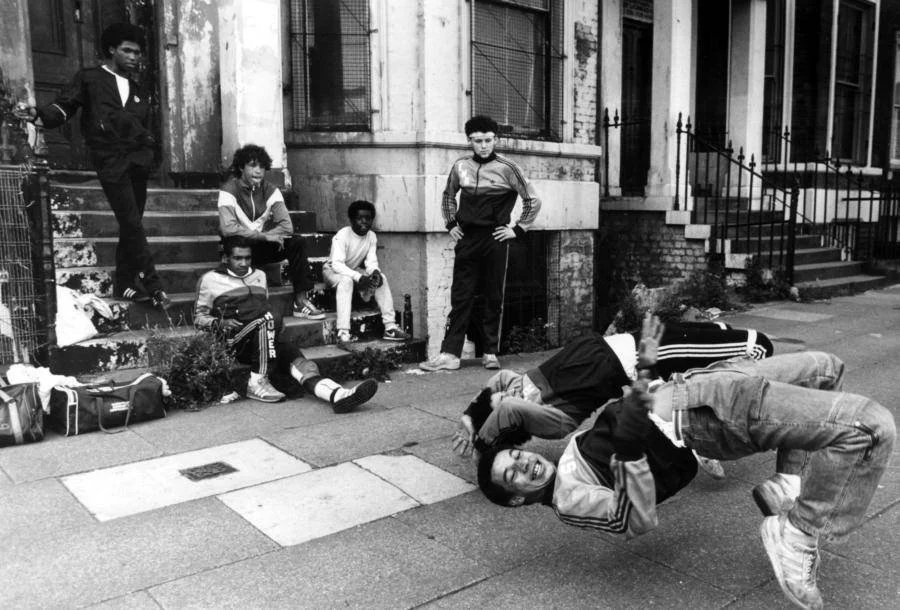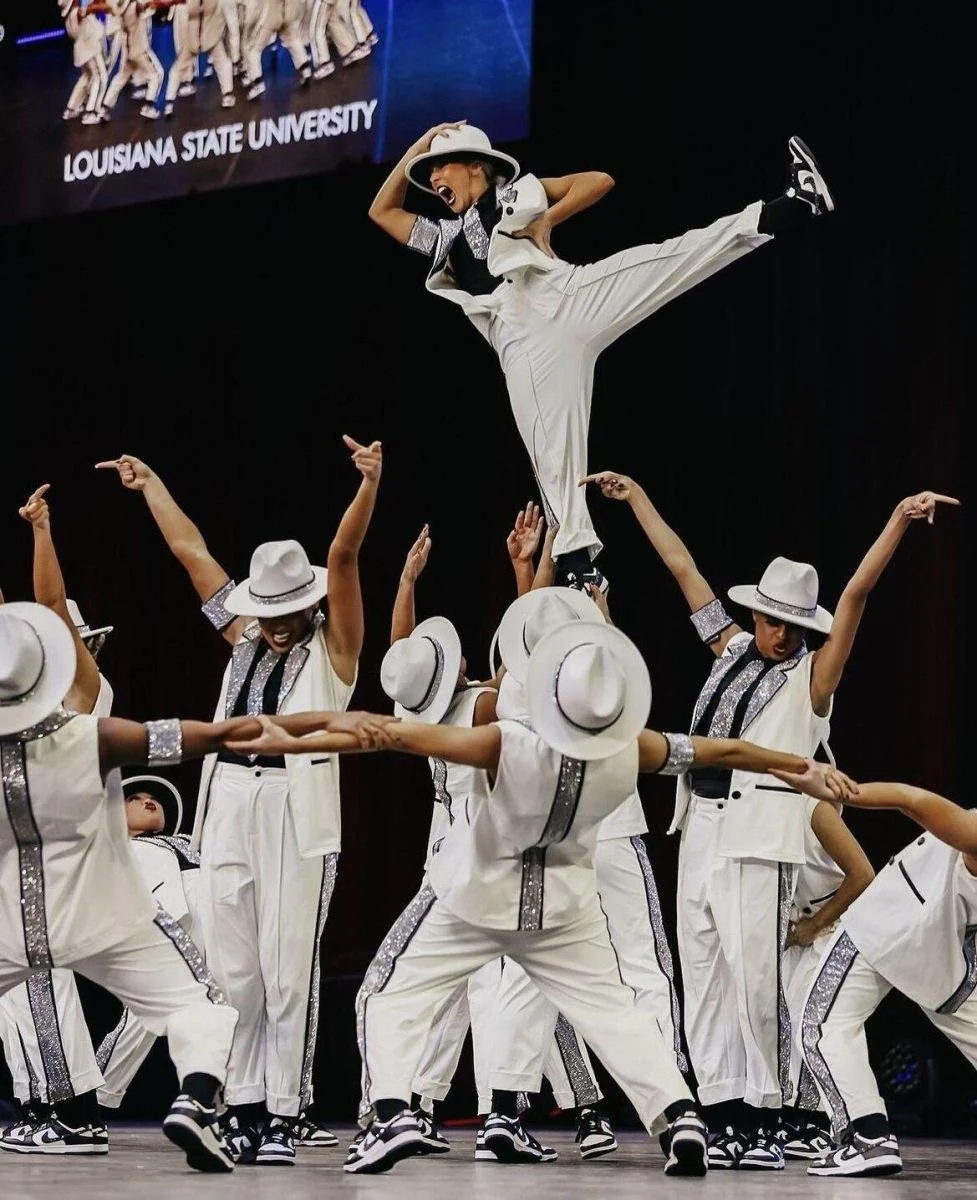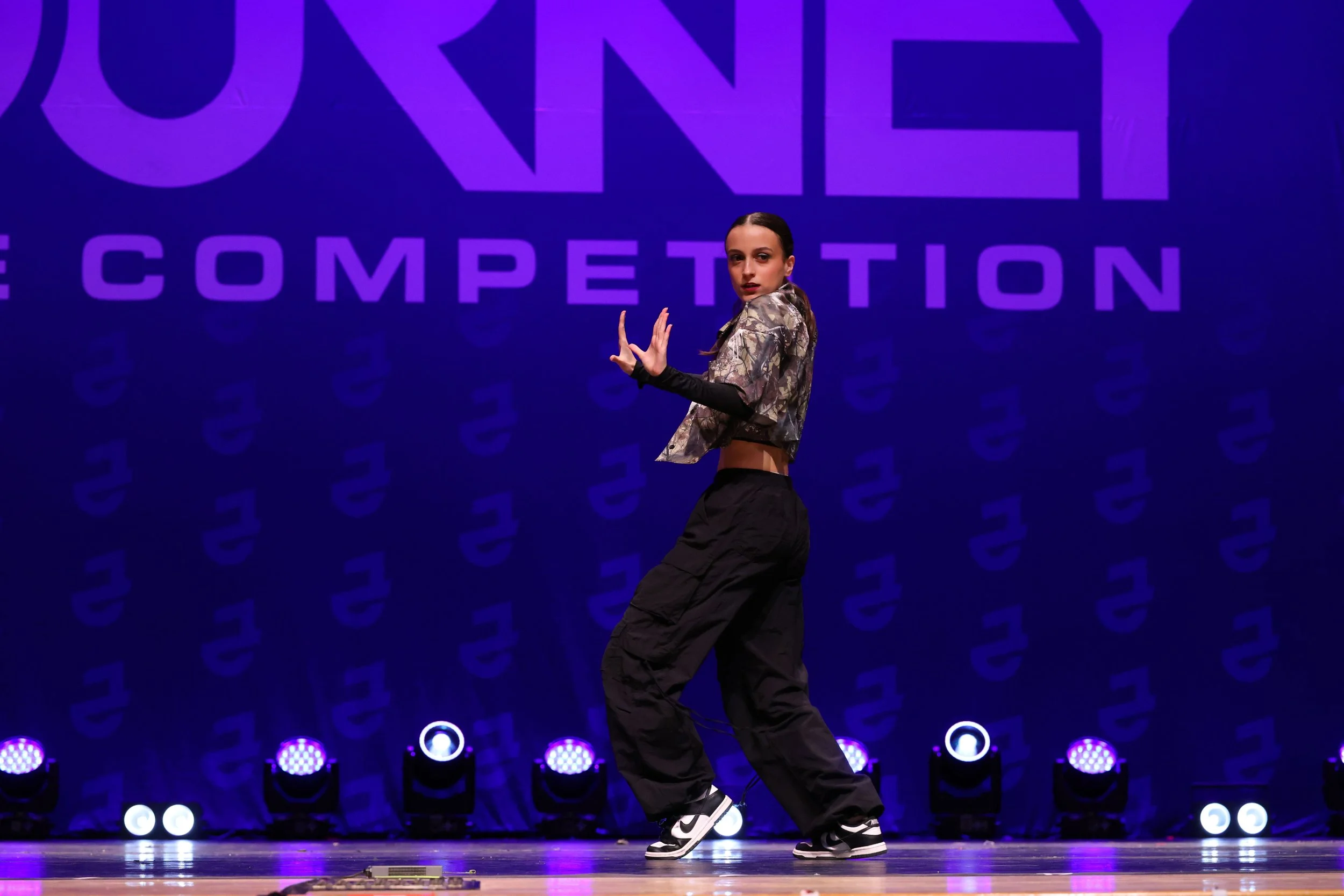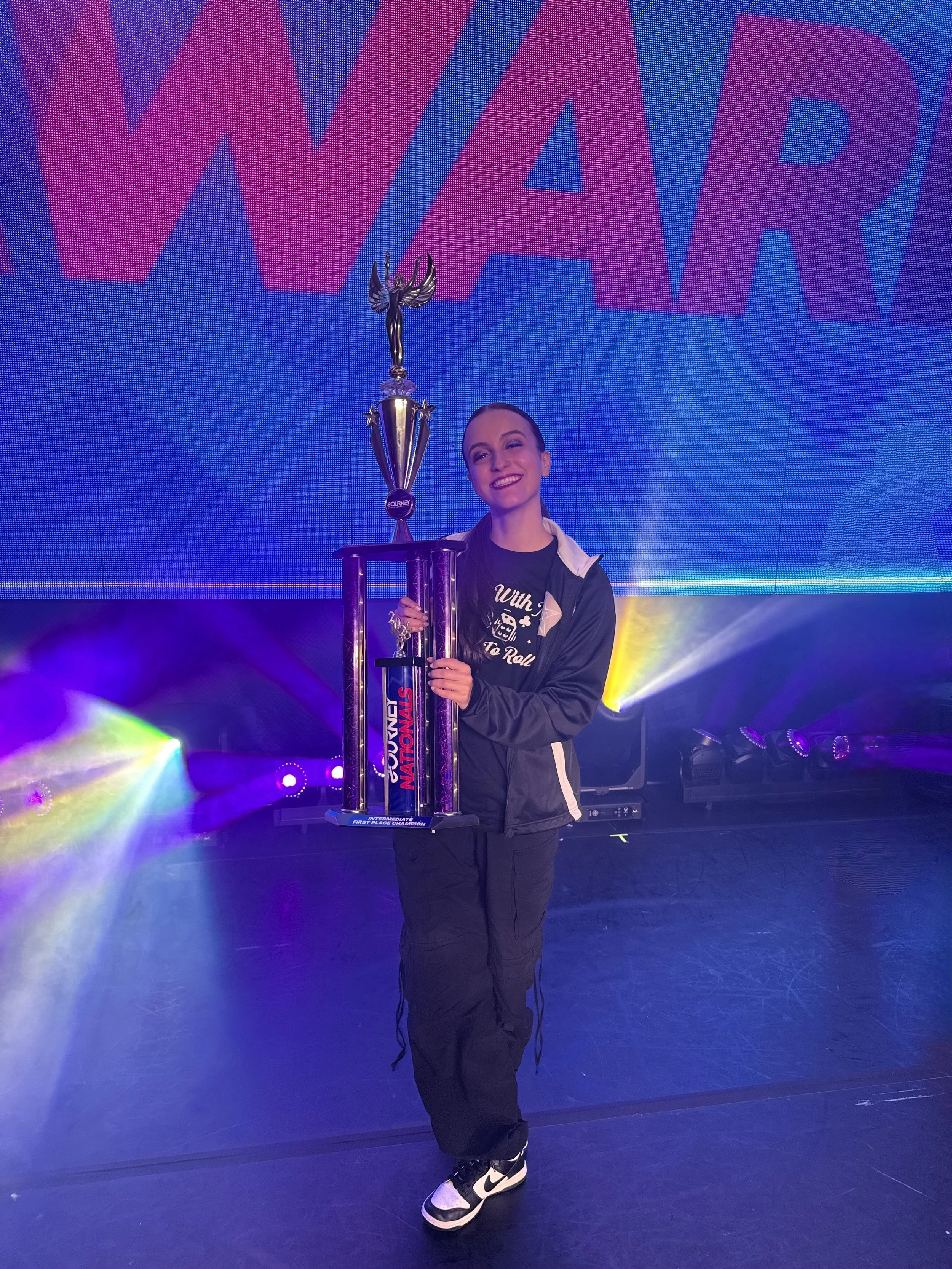What Hip Hop Dance Taught Me About Power, Performance, and Joy
Let’s be clear: dance is a sport, a difficult one that has shaped my life for years. I wouldn’t call my journey as a dancer traditional. I don't possess the "standard" skill set of splits or perfect turns, but my musicality and ability to feel the rhythm and groove always set me apart. When I took my first hip hop class over a decade ago, I realized that I had finally found my style. Sixteen years later, this isn't just my story, but an exploration of hip hop's impact on how it’s valued today.
The History of Hip Hop
The Eastwood Rockers breakdancing on the sidewalk in 1984 (Eddie Barford/Mirrorpix/Getty Images)
Hip-hop emerged in the Bronx in the 1970s as a means for African American and Latino communities to express themselves during a period of economic turmoil in New York City. These marginalized groups created an environment that allowed them to learn and grow through art, which evolved into a dynamic cultural movement spanning over fifty years. The style of dance is an entity that belongs to the broader culture of Hip Hop, which has five elements: Deejaying, Emceeing, Graffiti, Breaking, and Knowledge. Initially starting as “street dance”, it was an improvisational movement that gave dancers the space to play around in public spaces. Those environments gave rise to various styles, including popping, locking, krumping, and boogaloo. Flash forward many years, and hip-hop is a global phenomenon, touching the lives of many people across the world.
My Introduction to Hip Hop
LSU Tiger Girls Compete at UDA Nationals in 2024 (PC: FinXShots)
When I was younger, I would often freestyle in my living room whenever I had the chance. While I started taking dance classes in 2009, I only did ballet and tap, and don’t get me wrong, I don’t have a problem with either, but they just weren’t my thing. In 2012, my parents finally enrolled me in a class that taught ballet, tap, and hip-hop. We performed a routine to “Beauty and a Beat” by Justin Bieber at the end of the year recital, and it might have been the highlight of my life. From there, all I wanted to do was hip hop, but of course, I knew that it was essential to be as well-rounded as possible, even if I didn’t necessarily love any other style.
The Competitive Scene
Me, competing at a dance competition (PC: Journey Dance Competition)
My journey into competitive hip hop was a significant leap from the recreational classes that ignited my passion. When I first joined my studio’s competition team, the transition to this more demanding level was exhilarating. Initially, the judge’s scores didn’t mean much to me because I was just thrilled to be training with more intensity than I was accustomed to. Eventually, this hunger for individual growth led me to learn my first solo routine.
To put it plain and simple: solos are difficult. Unlike group performances, where critiques are an evaluation of the team as a whole, every comment is a direct assessment of you. On top of that, the competitive dance industry often undervalues hip-hop routines. It's a common misconception that hip hop lacks the technical rigor of styles like contemporary or lyrical, and finding a judge who truly specializes in the style on a panel is usually a hit-or-miss scenario. While I've done relatively well with my various solos over the years, I'd be lying if I said there weren't times when my scores didn't reflect my performance, in my opinion. This isn't necessarily unfair, but rather a reality of specialized genres like hip-hop or tap: if judges aren't experts, they might score more leniently, or, conversely, harsher if they are specialists who understand the technique that goes into an award-winning routine. This has only motivated me to head back to the drawing board to refine and adapt my foundation.
The Judging of Hip Hop
A perfect example of a routine that captures the difficult essence of hip hop is San Diego State University’s performance at the Universal Dance Association’s College Nationals this past January.
You might not see them doing gravity-defying flips or overextended leaps, but a routine like this still demands immense strength, flexibility, and stamina. This product is the result of hours of meticulous cleaning, ensuring every movement has razor-sharp clarity. In hip-hop, judges are looking for the effective utilization of levels, textures, and musicality. You can see that these dancers are allowing their movements to explode from the ground up, they’re differentiating between hard-hitting isolations and smooth floorwork, and they’re hitting every subtle beat. Not to mention, their facial expressions perfectly match the song's vibe and keep the audience engaged throughout. Not every hip hop routine will look like this, as every choreographer has their distinct catalog of movements, but this display of technique is why SDSU tends to score high in this category.
Rediscovering the Joy
As a dancer, it's easy to get caught in the mindset where your worth feels defined in comparison to others. That level of stress can make rehearsals draining and redundant at times. Amidst the pressure, it's crucial to find that inner child, the one who first fell in love with your sport in the first place, to remind yourself of why you do it. I'll never forget one solo routine when my sneaker flew off ten seconds in, leaving me to perform the rest of the piece with just one shoe. Everyone expected me to walk off stage upset, but instead, I was laughing uncontrollably at myself. That moment was a powerful reminder that, at the end of the day, as long as I’m enjoying myself, that’s all that matters. Of course, it does feel nice to win, though!
Me, winning first place with my solo routine this past week at nationals!





